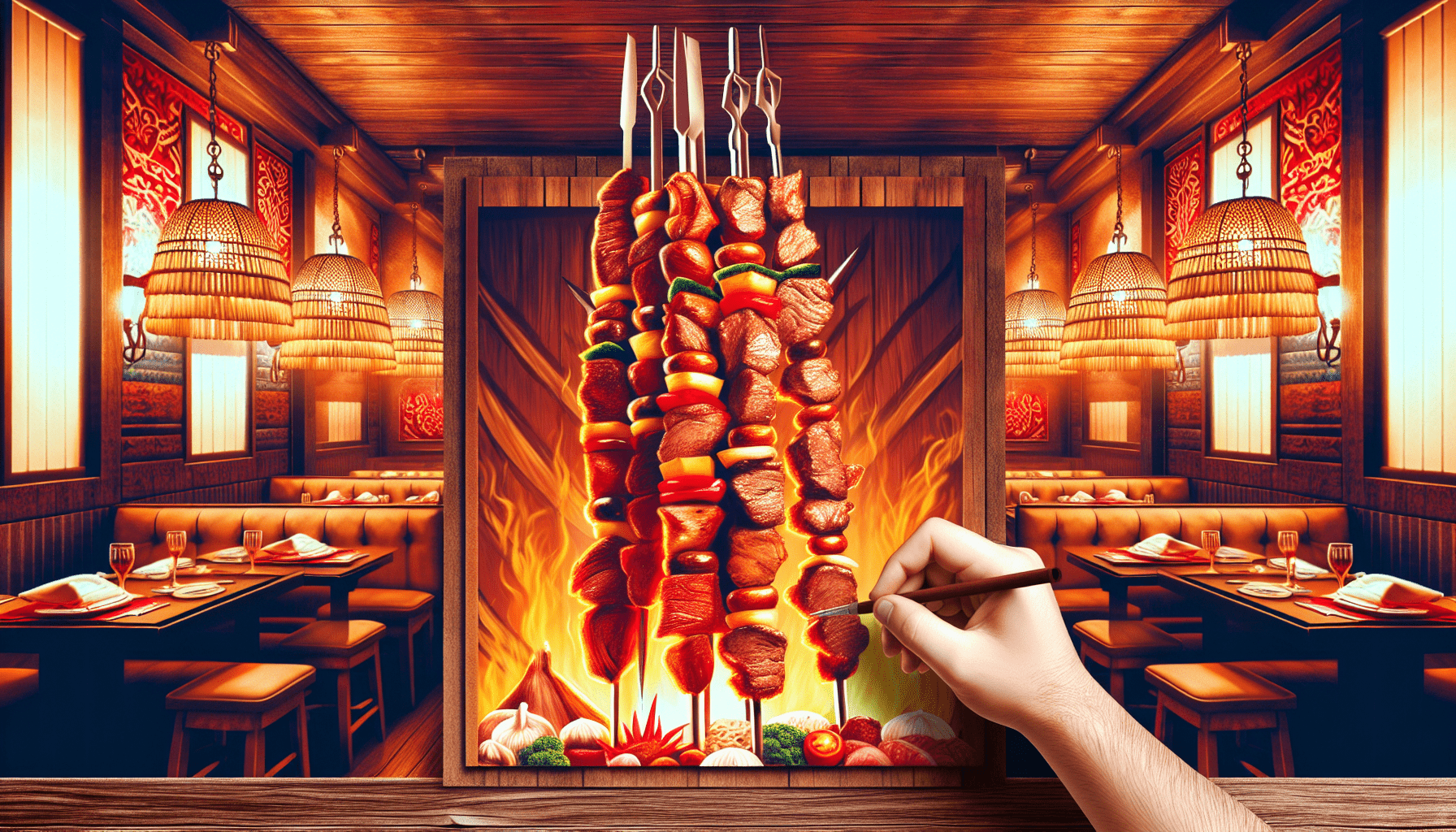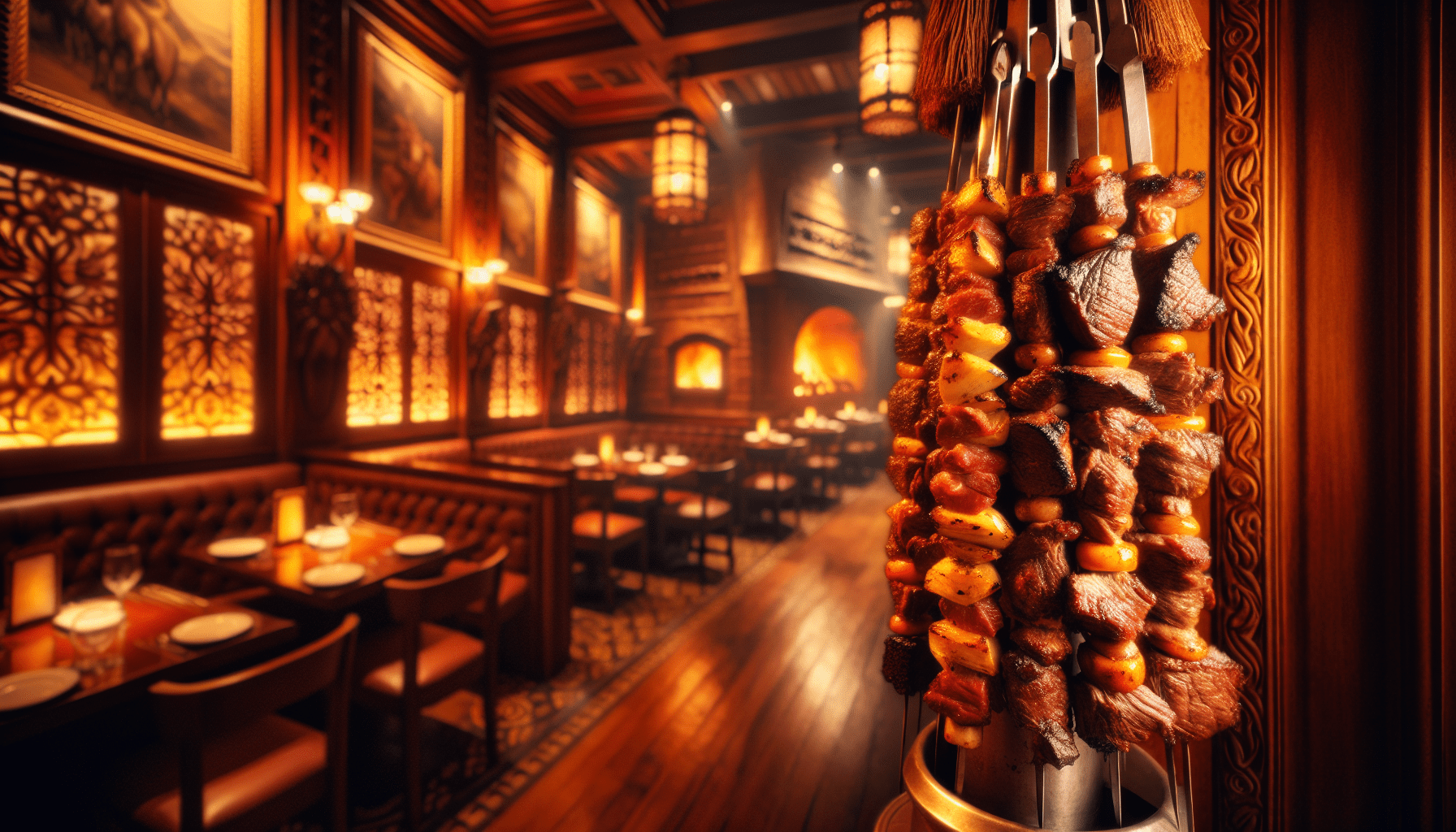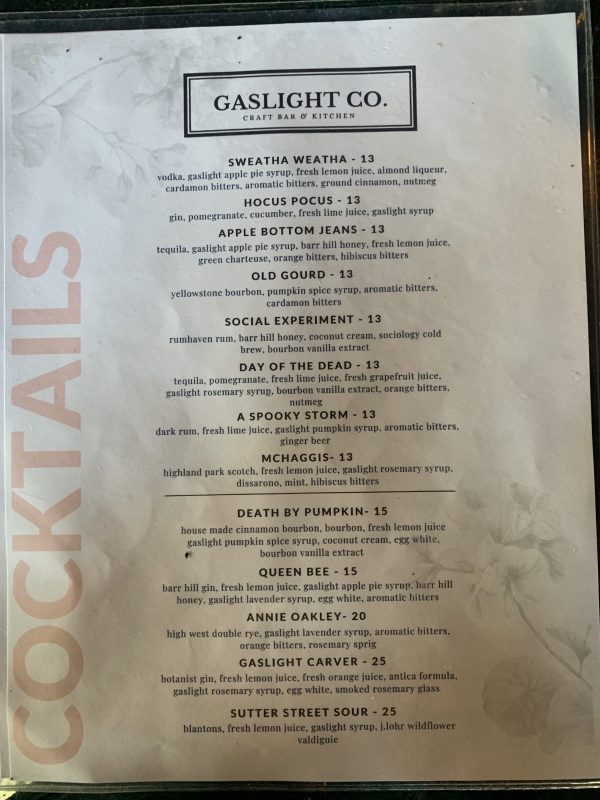Amazon Basics Medium Packing Cubes for Travel, Packing Organizers, 4-Piece-Set With Double Zipper Pulls and Mesh Top Panel, 100% Durable Polyester, Gray, 13.8"L x 9.8"W x 3"H
$17.91 (as of April 16, 2025 04:30 GMT +00:00 - More info)Exploring the rich culture and history of Brazilian steakhouses unveils a journey that stretches back far beyond the modern dining experience you might know today. By diving into this captivating story, you’ll discover the roots of churrasco, a grilling tradition that originated with the native Guarani people in the 1600s and evolved through the centuries. From the Guarani’s method of salting and roasting meat over hot coals to the influence of Italian immigrants who refined the tradition with spit-roasted marinated beef, Brazilian steakhouses have come a long way. The 20th-century transformation into the all-you-can-eat format, combined with the establishment of renowned churrascarias like Fogo de Chao, illustrates the cultural and historical richness behind every juicy bite you savor at these beloved dining establishments.
Exploring the Rich Culture and History of Brazilian Steakhouses
Have you ever wondered what makes Brazilian steakhouses so special? From the endless parade of succulent meats to the storied history behind their creation, Brazilian steakhouses are a captivating blend of culture, tradition, and culinary perfection. Whether you’ve dined at one of these establishments or you’re planning your first visit, let’s dive into the flavorful world of Brazilian steakhouses and explore how they came to be.

Get an Official Zagat Restaurant Guide
The Origins: A Taste of History
The Guarani People and the Early Days
The history of Brazilian steakhouses, also known as churrascarias, can be traced back much further than you might expect. It starts with the Guarani people in the 1600s. They lived in communities overseen by Jesuit missionaries in what is now western Brazil. The Guarani were primarily livestock herders, and their primary source of sustenance was meat. In an innovative method that mixed old and new world techniques, they preserved raw meat by salting it with horse sweat and then cooking it over hot coals.
From Guarani to Gauchos
By the 17th century, these Guarani communities had vanished, but their culinary techniques did not disappear with them. Instead, traveling herders and gold diggers adopted these methods, salting and cooking their meat while migrating and establishing new settlements. Over time, these settlements blossomed into vast cattle ranches by the 19th century, creating a thriving tradition of roasting meat over open flames.
The Evolution of Churrasco
Italian Influence in the 20th Century
The modern form of Brazilian churrasco was significantly influenced by Italian immigrants in the 20th century, who introduced the idea of spit-roasting fine cuts of marinated beef for special occasions. This transformation contributed to the all-you-can-eat style that Brazilian steakhouses are famous for today.
The Rise of Churrascarias as Restaurants
It wasn’t until the 1950s and 1960s that churrascarias began to emerge as formal dining establishments in southern Brazil. Initially, these restaurants were informal and served as cozy roadside stops for truck drivers and construction workers. The unique concept of a pre-fixe menu with circulating meats began as a happy accident when a gaucho offered a sample of meat to customers after delivering the wrong order.
Migrating North: Changing Demographics and Dining Trends
As the population shifted from the south to the north of Brazil, churrascarias followed suit. These new establishments aimed for a “fancier” atmosphere. The 1970s saw the opening of what would become an iconic brand in the world of Brazilian steakhouses—Fogo de Chao. Founded by the Coser brothers in Porto Alegre, Fogo de Chao brought the art of Brazilian churrasco to the United States in the 1980s, starting with Texas.
Get an Official Zagat Restaurant Guide
The Brazilian Steakhouse Experience
The All-You-Can-Eat Extravaganza
When you step into a Brazilian steakhouse, you’re in for a treat. The hallmark of these establishments is the continuous table-side service of various grilled meats, known as rodízio. Gauchos walk around the dining area carrying skewers of meat, slicing portions directly onto your plate until you signal them to stop. The variety usually includes:
| Type of Meat | Description |
|---|---|
| Picanha | Top sirloin cap, a Brazilian staple known for its rich flavor. |
| Fraldinha | Flank steak, known for its tender texture. |
| Alcatra | Top sirloin, offering a good balance of flavor and tenderness. |
| Cordeiro | Lamb, often marinaded to enhance its natural flavors. |
| Lombo | Pork tenderloin, sometimes served with a Parmesan crust. |
Side Dishes and Salad Bar
Complementing the meaty feast are an array of side dishes and a generous salad bar. Traditional sides often include rice, beans, fried bananas, and pão de queijo (cheese bread). The salad bar is usually laden with an assortment of vegetables, cold cuts, cheeses, and more to round out your meal.
The Ambiance
The ambiance of a Brazilian steakhouse plays a crucial role in the overall experience. You’ll find a mix of rustic and modern décor, often featuring elements that pay homage to the gaucho culture and the rich history of churrasco. This results in a warm, inviting atmosphere perfect for leisurely dining.
The Global Spread of Brazilian Steakhouses
Fogo de Chao: A Case Study
Fogo de Chao’s successful expansion into the United States was not by chance. By choosing Texas as their first location, they tapped into the state’s existing cowboy culture, which shared many similarities with the gaucho lifestyle. It’s no surprise that Texans quickly fell in love with the Brazilian steakhouse experience.
Proliferation of Brazilian Steakhouses
Over the past few decades, Brazilian steakhouses have spread far beyond Brazil and Texas. Today, you can find them in major cities worldwide. New chains have also emerged, offering diverse pre-fixe menus and a plethora of meat cuts. The growth of these restaurants speaks to their universal appeal and the timeless allure of churrasco.
Cultural Exchange Through Cuisine
The global expansion of Brazilian steakhouses serves as an excellent example of cultural exchange. They offer diners a chance to experience Brazilian culture and cuisine firsthand, fostering a greater appreciation for Brazil’s history and culinary traditions.

Legacy and Traditions
Maintaining Authenticity
Despite their global proliferation, many Brazilian steakhouses strive to maintain authenticity. This includes importing specific ingredients from Brazil and training gauchos to ensure the meat is cooked and served in traditional Brazilian style.
Celebrating Gaucho Culture
The gaucho plays a pivotal role in the history and culture of Brazilian steakhouses. These skilled meat carvers not only prepare the food but also embody the spirit and traditions of the churrasco. Many restaurants celebrate gaucho culture through their décor, staff attire, and even special events.
Family Gatherings and Special Occasions
In Brazil, churrasco is more than just a meal; it’s an event. Families gather to enjoy an afternoon of food, music, and laughter. Many Brazilian steakhouses overseas have adopted this tradition, creating a festive atmosphere perfect for family gatherings and special occasions.
Conclusion: The Timeless Appeal of Brazilian Steakhouses
The rich culture and history of Brazilian steakhouses have turned them into global dining sensations. From their humble beginnings with the Guarani people to their modern-day status as culinary landmarks, these establishments offer more than just a meal—they provide a journey through Brazil’s vibrant history and traditions.
Whether you’re a seasoned churrasco enthusiast or a first-time visitor, Brazilian steakhouses promise an unforgettable dining experience. So next time you find yourself in one, take a moment to appreciate the centuries of tradition, innovation, and culture that have contributed to that succulent piece of meat on your plate. Enjoy!


 Ultimate PIRI PIRI CHICKEN Tour in Portugal!
Ultimate PIRI PIRI CHICKEN Tour in Portugal!



